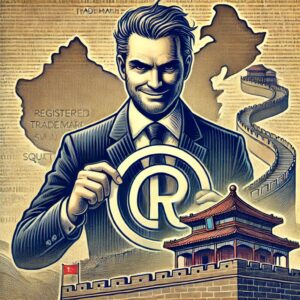1. Selling Your Made in China Product in China
Many of our foreign company clients (usually North American, European or Australian) have their products made in China under contract manufacturing arrangements with Chinese manufacturers. At the start of these relationships, the foreign company’s goal has typically been to sell their products in the North American and European markets. But with what has been happening lately with tariffs and shipping costs, our China lawyers are getting questions about selling the foreign company’s products in China to Chinese customers.
When the foreign company investigates the situation, it quickly discovers that selling its product into China will be considerably more complex than it initially seems. Since the foreign company does not own the product until after it is shipped outside China, selling the product within China requires a complex process of exporting out of China and then selling back into China. This results in potentially having to pay VAT twice: once on the export and again on the import. As a result of this, foreign buyers of contract manufactured product will often be approached by a Chinese company with elaborate schemes designed to avoid such taxation.
2. Be Careful of Sell-in-China Schemes
The Chinese company often will try to convince the foreign company to enter into a complex “partnership” or joint venture that will “allow” the foreign company to participate in the product distribution business in China. Entering into such a partnership is usually a mistake, particularly when tax avoidance and “incentives” for making sales are the major objective. For more on China Joint Ventures, check out China Joint Ventures: The Long Version.
The foreign company should instead insist on operating under the standard distribution model used throughout the world. The foreign company should purchase its product from its Chinese manufacturer, receive that product outside China (in an export processing zone or when shipped) and then sell that product back into China to a qualified PRC distributor. The Chinese distributor can be located in China, or in a PRC export processing zone or in Hong Kong. The foreign company should set up that distribution relationship so it earns its profit from the initial sale, freeing the foreign company from any concerns with the financial side of the Chinese operation. On the other hand, the foreign company should strictly monitor the operations of the Chinese distributor through a standard distribution agreement.
If the foreign company wishes to support its PRC distributor, it is free to offer incentives. There are many ways to do this, including by a) not charging the Chinese distributor for product used as samples, b) giving the Chinese distributor reduced pricing for a certain number of products, and/or c) providing the Chinese distributor with incentive payments for advertising, for seminars and/or to partially or completely cover the cost of government registrations. Such incentives should only be offered to a distributor operating under a standard China distribution agreement that allows the foreign company to terminate the agreement if the distributor does not perform (which is common), that gives the foreign company the right to audit the distributor’s performance, and allows the foreign company to terminate the Chinese distributor if it engages in irregular conduct such as bribery or kickbacks (which is common). One major defect in any kind of partnership/joint venture approach is that it is difficult to hold the Chinese side to a tight performance standard when there is a business ownership relationship. It is like a marriage: easy to get into, but hard to get out of.
Due to the need to export product from China and then import it back into China, the Chinese distributor often will establish an entity in Hong Kong to handle these operations. The foreign company can take an ownership interest in the Hong Kong distributor, but the basic rules remain the same: 1) the Hong Kong distributor should be treated as an arms-length third party, operating under a standard distribution agreement and 2) the foreign company (the North American or European or Australian company) should earn its profits from sales to the distributor — taking the profits NOW — and not from the uncertain and tax-disadvantaged distribution of profits from the distributor at some inherently uncertain later date. The foreign company should understand it is a myth that it will be able to exercise more control in a joint venture than via the above sort of distributor relationship. It is difficult for a foreign company to control a joint venture thousands of miles away and with no right to make a quick and decisive contract termination decision.
It is rare for foreign companies (particularly SMEs) to want to get intensely involved in the business of product distribution in a vast and complex market like the PRC. This is why major multi-nationals often contract with Chinese distributors to do the work. It is virtually unheard of for foreign SMEs that understand the issues to even consider taking on this difficult burden. But inexperienced SMEs and start-up companies constantly get approached by Chinese companies with this kind of ill-conceived concept, for obvious reasons.
3. The Three Rules for any China Deal
If you are having your product made in China (or even outside China) and you are approached with a proposal to “joint venture” on selling your product into China, the first thing you should do is apply the following three basic rules that apply to any project concerning China:
1. If the proposal is complex, don’t do it. You should be able to understand every word of the proposal in a first reading.
2. If the proposal involves an equity joint venture business, don’t do it. Do not get into any business relationship with an entity in China that you cannot terminate by a simple contract termination notice.
3. If the proposal is not supported with a detailed set of financial projections, don’t do it. A “business plan” full of fluff and fancy jargon no one really understands does not count. You need a standard set of financial projections (hard numbers, not jargon) with each assumption clearly spelled out and supported with facts.
If you follow these three rules you will save yourself time and money in dealing with projects in China.

























